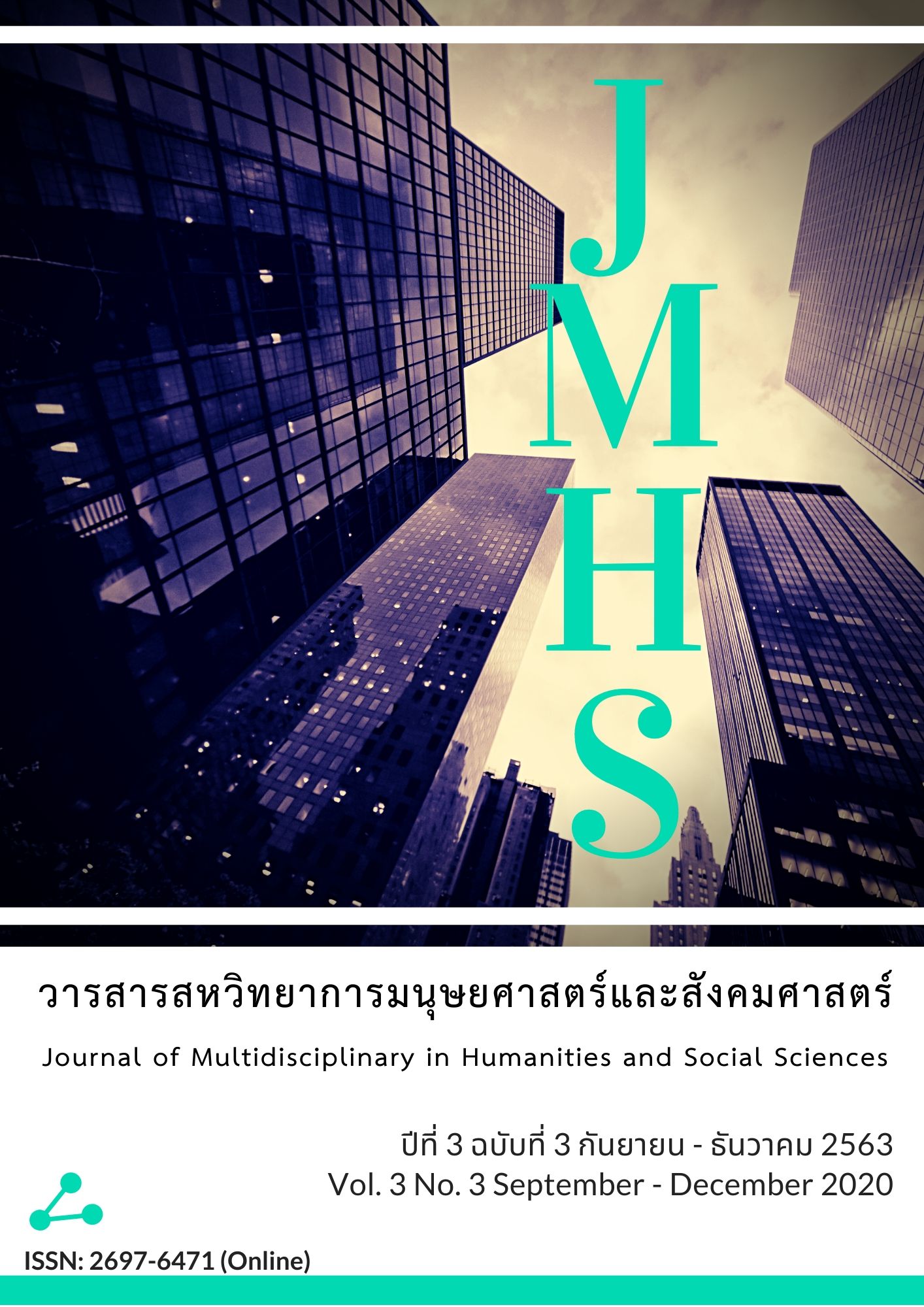The Development of Vocabulary Learning Achievement and Retention Using Mnemonics and Vocabulary Picture Books For Grade 6 Students of Anuban Nakhon Pathom School
Main Article Content
Abstract
This Article aimed to: 1) compare the students’ vocabulary learning achievement before and after learning by mnemonic and vocabulary books; 2) study the retention of students after learning by using mnemonics and vocabulary picture books; 3) explore the students’ opinions toward teaching by using mnemonics and vocabulary picture books.
The sample was 33 grade 6 students in Anuban Nakhon Pathom School. They were randomly selected. Pre-Experimental Research Design and One-group Pretest Posttest Design are used in this research. The duration of the experiment was 2 weeks. The instruments consisted of 1) lesson plans 3) a vocabulary test 4) a questionnaire on opinions toward learning by using mnemonics and vocabulary picture books.
The research results were 1) the students’ vocabulary learning achievement after using mnemonics and vocabulary picture books was significantly higher than before at the .05 level; 2) the students’ opinions toward teaching vocabulary using mnemonics and vocabulary picture books were at the highest level and 3) the students’ retention in teaching vocabulary using mnemonics and vocabulary picture books was not different from the post-test.
Article Details
Views and opinions appearing in the Journal it is the responsibility of the author of the article, and does not constitute the view and responsibility of the editorial team.
References
จุฬารัตน์ ดวงแก้ว. (2552). ความพึงพอใจของครูต่อภาวะผู้นำทางวิชาการของผู้บริหารสถานศึกษาโรงเรียนมัธยมวัดสิงห์ สังกัดสำนักงานเขตพื้นที่มัธยมศึกษา เขต 1. (วิทยานิพนธ์ปริญญามหาบัณฑิต). มหาวิทยาลัยรามคำแหง.
ชลลดา เรืองฤทธิ์ราวี. (2553). ผลการใช้กลวิธีช่วยจำเพื่อพัฒนาการเรียนรู้คำศัพท์ภาษาอังกฤษของนักเรียนชั้นประถมศึกษาปีที่ 2. (วิทยานิพนธ์ปริญญามหาบัณฑิต). มหาวิทยาลัยมหาสารคาม.
ทิศนา แขมมณี. (2545). ศาสตร์การสอนองค์ความรู้เพื่อการจัดการกระบวนการเรียนรู้ที่มีประสิทธิภาพ. กรุงเทพฯ: จุฬาลงกรณ์มหาวิทยาลัย.
นรินทร์ชัย พัฒนพงศา. (2542.) การสื่อสาร-รณรงค์เชิงยุทธศาสตร์เพื่อเปลี่ยนพฤติกรรมมนุษย์ เน้นการเจาะจงกลุ่มและมีส่วนร่วม. กรุงเทพฯ: รั้วเขียว.
สถาบันทดสอบทางการศึกษาแห่งชาติ. (2560). สรุปผลการทดสอบทางการศึกษาระดับชาติขั้นพื้นฐาน. สืบค้น 23 มีนาคม 2561, จาก http://www.newonetresult.niets.or.th/AnnouncementWeb/PDF/SummaryONETM3_2560.pdf
สิรินทร เพียรพิทักษ์. (2555). ผลการเรียนรู้ด้วยเกมคอมพิวเตอร์แบบผจญภัยร่วมกับเทคนิคช่วยจำ วิชาภาษาจีนพื้นฐาน 1 ที่มีต่อผลสัมฤทธิ์และความคงทนในการจำของนักศึกษาระดับปริญญาตรี คณะศึกษาศาสตร์ มหาวิทยาลัยศิลปากร. (วิทยานิพนธ์ปริญญามหาบัณฑิต). มหาวิทยาลัยศิลปากร.
วรัลยา ช้างขวัญยืน. (2547). บรรทัดฐานภาษาไทย เล่ม 2 คำการสร้างคำและการยืมคำ. กรุงเทพฯ: สำนักวิชาการและมาตรฐานการศึกษา สถาบันภาษาไทย.
อิสรา สาระงาม. (2530). การสอนภาษาอังกฤษในระดับมัธยมศึกษา. เชียงใหม่: มหาวิทยาลัยเชียงใหม่.
อุทัย ภิรมย์รื่น และเพ็ญศรี รังสิยากูล. (2535). ปัญหาการสอนภาษาอังกฤษแก่ผู้เริ่มเรียน. กรุงเทพฯ: วิคตอเรียการพิมพ์.
อรุณี วิริยะจิตรา. (2548). การเรียนการสอนภาษาเพื่อการสื่อสาร. กรุงเทพฯ: อักษรเจริญทัศน์.
Allen, V. F. (1983). Techniques in teaching vocabulary. New York: Oxford University Press.
Bishop, A., Yopp, K., & Yopp, H. (2009). Vocabulary Instruction for Academic Success. CA: Shell Education.
Craik, F. I. M., & Lockhart, R. S. (1972). Levels of processing: a framework for memory research. Journal of Verbal Learning and Verbal Behavior, 11, 671-684.
Dale, E. (1969). Audio-Visual Methods in Teaching (3rd ed.). Holt, Rinehart & Winston, New York: Dryden Press.
Knowledge rush. (2014). Mnemonic Technique. Retrieved August 17, 2018, from http://www.knowledgerush.com/encyclopedia/Mnemonic_techniques
Lado, R. (1988). Language Teaching: Teaching English Across Cultures. New York: Mc GrawHill.
Memory Bank. (2014). Mnemonic Devices. Retrieved January 25, 2018, from http://library.thinkquest.org/C0110291/TRICKS/mnemonics/index.php
Nation, I. S. P. (2012). Learning vocabulary in another language. Cambridge: Cambridge University Press.
The Access Center. (2000). Using mnemonic instruction to facilitate access to the general education curriculum. Retrieved April 20, 2020, from http://www.ldonline.org/article/15577?theme=print
Thornbury, S. (2002). How to teach vocabulary. Essex: Pearson Education Limited.
Wilkins, D. A. (1972). Linguistics in Language Teaching. London: Edward Arnold.
Wyra, M., Lawson, M. J., & Hungi, N. (2007). The Mnemonic Keyword Method: The Effects of Bidrectional Retrieval Training and of Ability to Image on Foreign Language Vocabulary Recall. Learning and Instruction. 17(3), 360-371.


